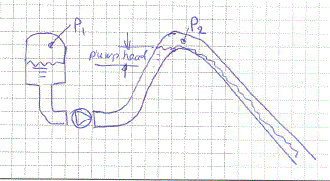Mike4chemic
Chemical
Hello,
I am involved in the design of 8" geothermal condensate pipeline, its function to transfer the hot geothermal condensate from the Plant to an injection well. Since the condensate is at the saturation conditions( 5 barg& 159 deg.C),there is a pump station, which increases the condensate pressure to overcome friction and elevation losses and thus allows to avoid condensate flashing and possible two-phase flow problems like a slug flow. The pipe consists of two sections: upward (elevation 20 m) and downward section (-60m).See the attached sketch
In order to keep the pressure at the upper point of the pipe, we intend to install at the pipe low point an automatic back-pressure control valve, which will keep the condensate pressure at the pipe's high point above the saturation pressure.
Is it feasible to perform this control,given the fact that the length of the downheel pipeline section is 2 km?
Thank in advance, Mike
I am involved in the design of 8" geothermal condensate pipeline, its function to transfer the hot geothermal condensate from the Plant to an injection well. Since the condensate is at the saturation conditions( 5 barg& 159 deg.C),there is a pump station, which increases the condensate pressure to overcome friction and elevation losses and thus allows to avoid condensate flashing and possible two-phase flow problems like a slug flow. The pipe consists of two sections: upward (elevation 20 m) and downward section (-60m).See the attached sketch
In order to keep the pressure at the upper point of the pipe, we intend to install at the pipe low point an automatic back-pressure control valve, which will keep the condensate pressure at the pipe's high point above the saturation pressure.
Is it feasible to perform this control,given the fact that the length of the downheel pipeline section is 2 km?
Thank in advance, Mike

